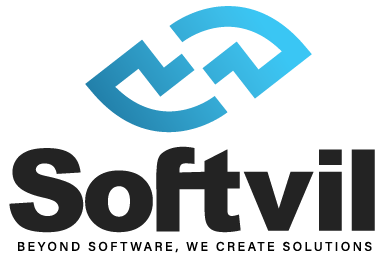Introduction
Software development outsourcing has emerged as a strategic solution for businesses seeking efficient and cost-effective ways to meet their software development needs. As organizations aim to optimize their operations, software outsourcing solutions have become increasingly popular, allowing them to leverage external expertise and resources. By partnering with reputable software outsourcing companies, businesses can access a pool of skilled professionals and cutting-edge technologies, enhancing their overall project efficiency and productivity.
Measuring key metrics plays a pivotal role in evaluating the success of software outsourcing projects. It enables businesses to gain valuable insights into project performance, track productivity, and identify areas for improvement. Metrics such as project delivery time, quality metrics like defect density and test coverage, and cost-based metrics like ROI provide a data-driven approach to project evaluation. By analyzing these metrics, companies can make informed decisions, drive continuous improvement, and ensure successful outcomes for their outsourcing ventures. In this article, we delve into the importance of data-driven metrics for software outsourcing, elucidating how they pave the way for enhanced business operations and project success.
Time-Based Metrics

Time-based metrics play a crucial role in assessing the performance of software development outsourcing projects. These metrics provide valuable insights into project timelines, efficiency, and adherence to deadlines, ensuring smooth project management and successful outcomes.
Evaluating Performance and Meeting Deadlines
Time-based metrics help evaluate the performance of the outsourcing team by tracking the time taken to complete specific tasks and deliverables. By analyzing these metrics, project managers can assess team productivity, identify potential bottlenecks, and take corrective actions to stay on track.
Project Delivery Time
Project delivery time measures the duration from project initiation to its successful completion. This metric is a key indicator of project efficiency and management. A shorter project delivery time signifies streamlined workflows and effective project planning, contributing to improved productivity.
Importance in Project Management and Planning
Project delivery time is essential for effective project management and planning. It allows businesses to set realistic project timelines, allocate resources efficiently, and manage client expectations. Meeting project deadlines fosters client trust and satisfaction, leading to better long-term relationships.
Time to Market
“Time to Market” is a critical time-based metric that measures how quickly a product is developed and launched from its conception. For companies, especially in competitive industries, a shorter time to market provides a distinct competitive advantage. It allows businesses to seize market opportunities swiftly, ahead of their competitors, and capture a larger market share.
Affect on Competitive Advantage
Reducing the time to market enables companies to respond rapidly to changing market demands and customer preferences. It allows for early market entry, attracting early adopters and generating revenue sooner. This competitive advantage can lead to increased brand recognition, higher customer loyalty, and greater profitability.
Quality Metrics

Quality metrics are fundamental in software development outsourcing, as they play a critical role in ensuring the delivery of high-quality software products. These metrics provide valuable insights into the software’s reliability, stability, and overall performance, guiding teams towards excellence.
Ensuring High-Quality Software Products
Quality metrics are vital for meeting customer expectations and delivering software that meets stringent quality standards. They help assess various aspects of the software development process, ensuring that the end product meets the required levels of functionality, security, and user experience.
Defect Density and Software Readiness
Defect density is a key quality metric that measures the number of defects found in relation to the software size, typically represented in lines of code or function points. It provides a clear indication of software readiness for release. A low defect density signifies a higher level of software stability and indicates that the product is closer to being ready for deployment.
Code Review Feedback and Code Churn
Code review feedback and code churn are essential quality metrics that focus on maintaining a stable codebase. Code review feedback allows developers to receive constructive input from their peers, leading to better code quality and adherence to coding standards. Code churn measures how frequently code changes during development, and minimizing code churn ensures a stable and maintainable codebase, reducing the likelihood of introducing new defects.
Significance of Test Coverage
Test coverage is a critical quality metric that evaluates the thoroughness of testing efforts. It measures the extent to which the software’s functionality is covered by test cases. High test coverage indicates comprehensive testing, reducing the chances of undetected defects in the final product. Adequate test coverage is essential for building a robust software product that meets user expectations and performs reliably.
Cost Metrics

Cost-based metrics are essential components of software development outsourcing, serving as crucial tools in managing project budgets, achieving cost savings, and ensuring the financial viability of the entire venture.
Managing Project Budgets and Cost Savings
Cost-based metrics help businesses maintain control over project budgets and expenses. By tracking these metrics, project managers can identify potential cost overruns, allocate resources efficiently, and make data-driven decisions to optimize spending. Cost-based metrics also aid in achieving cost savings, which is a primary motivation for outsourcing projects.
Cost of Outsourced Development
The “Cost of Outsourced Development” metric quantifies the total expenditure involved in outsourcing the development process. It encompasses expenses related to research, design, prototyping, testing, and production. This metric provides a comprehensive view of the project’s financial implications, enabling businesses to assess the feasibility and return on investment.
Impact on Overall Project Profitability
Measuring cost savings is instrumental in evaluating the financial success of software development outsourcing. By comparing actual project costs against the initially estimated budget, businesses can determine the level of cost optimization achieved. Higher cost savings lead to improved project profitability and can positively influence the bottom line.
Return on Investment (ROI)
ROI is a key financial metric that measures the returns generated from the investment made in the outsourcing partnership. It evaluates the project’s financial success by dividing the total profit earned by the amount of money invested. A positive ROI indicates that the project has been financially successful and delivered value to the organization.
Resource Utilization

Resource utilization is a critical factor in software development outsourcing that significantly impacts project efficiency and team productivity. It involves effectively allocating and managing available resources, such as human capital and time, to optimize project outcomes.
Impact on Project Efficiency and Team Productivity
Resource utilization directly influences project efficiency and team productivity. Properly allocated resources ensure that the right skills and expertise are utilized at the appropriate stages of the project, streamlining workflows and minimizing delays. Efficient resource utilization enhances collaboration, fosters a positive work environment, and enables teams to deliver high-quality results within stipulated timelines.
Identifying Overworked or Underutilized Teams
Measuring resource utilization helps identify teams that are either overworked or underutilized. Overworked teams may experience burnout, decreased morale, and reduced productivity, leading to potential project delays and compromised quality. On the other hand, underutilized teams may result in wasted resources and inefficient use of available talent. Identifying these issues early allows project managers to implement necessary adjustments and ensure a balanced workload.
Optimizing Resource Allocation
Effective resource utilization involves optimizing resource allocation to align with project requirements and deadlines. By analyzing project scope, timelines, and team capabilities, project managers can strategically allocate resources, ensuring that teams work on tasks that best match their skill sets. Proper resource allocation enhances project focus, maximizes productivity, and minimizes resource bottlenecks.
Leveraging Data for Continuous Improvement

Data-driven decision-making is a pivotal aspect of achieving continuous improvement in software development outsourcing. By analyzing metrics and performance data, businesses gain valuable insights that enable them to identify areas for improvement and optimize their processes.
Role of Data-Driven Decision-Making
Data-driven decision-making forms the foundation of continuous improvement efforts. Rather than relying on intuition or guesswork, businesses use concrete data and performance metrics to guide their improvement strategies. This approach ensures that actions are based on facts and objective analysis, leading to more effective and targeted improvements.
Identifying Areas for Improvement
Analyzing metrics allows businesses to pinpoint specific areas that require improvement. Whether it’s project delivery time, defect density, or resource utilization, data-driven insights highlight the strengths and weaknesses of the outsourcing project. This information empowers project managers to focus on problem areas and implement targeted solutions.
Optimizing Processes
Metrics analysis provides a clear picture of how different processes contribute to project outcomes. By examining the data, businesses can identify bottlenecks, inefficiencies, and best practices. Armed with this information, organizations can optimize their processes, streamline workflows, and enhance overall project efficiency.
Benefits of Continuous Improvement in Outsourcing
A continuous improvement approach offers several advantages for software development outsourcing projects. It fosters a culture of learning and adaptation, allowing teams to evolve and innovate over time. Continuous improvement enhances team collaboration, as individuals are encouraged to share feedback and contribute to the refinement of processes.
Conclusion
In conclusion, data-driven metrics play a crucial role in optimizing efficiency and productivity in software development outsourcing projects. By leveraging these metrics, businesses can make informed decisions, identify areas for improvement, and drive continuous enhancement. The importance of tracking key metrics, such as time-based metrics, quality metrics, and cost metrics, cannot be overstated, as they provide valuable insights into project performance and success.
To achieve excellence in outsourcing ventures, businesses are encouraged to adopt a strategic approach to measure and analyze key metrics consistently. By doing so, they can proactively address challenges, streamline processes, and capitalize on opportunities for growth. Emphasizing a data-driven culture empowers teams to constantly learn, adapt, and innovate, promoting a continuous improvement mindset. Making use of these insights allows businesses to stay ahead of the competition, meet client expectations, and deliver high-quality software products efficiently. In the fast-paced and dynamic landscape of software development outsourcing, embracing data-driven metrics as a guiding compass is essential for achieving optimal results, maximizing ROI, and building enduring success in the ever-evolving technology industry.

